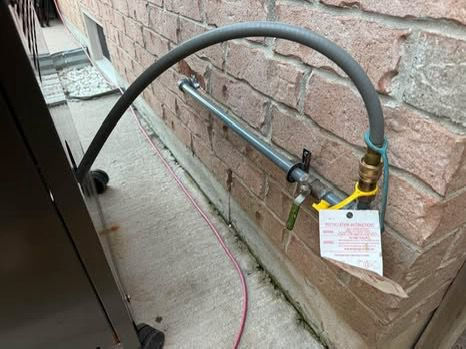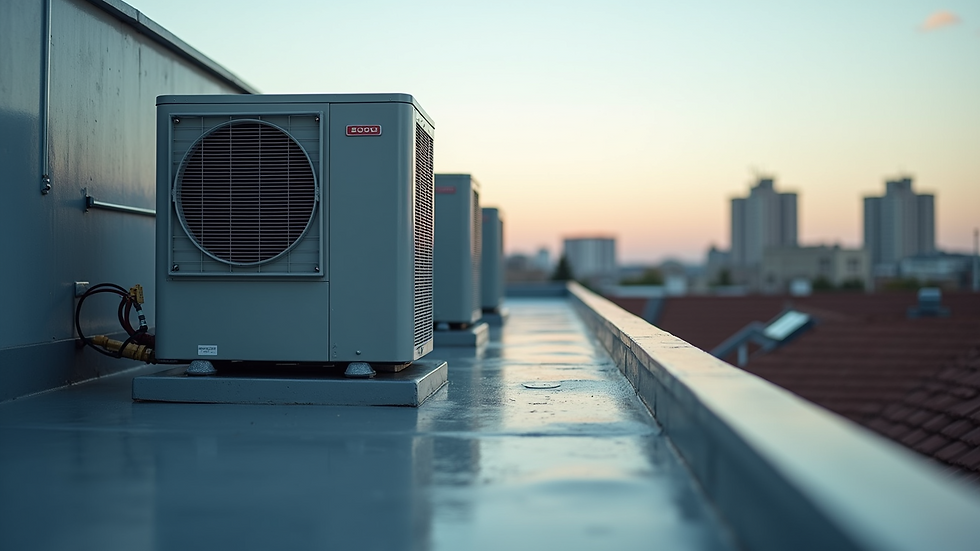Enbridge Red Tag after Meter Change: What Every Professional Needs to Know
- Kirill Anikin
- Jul 17
- 4 min read

"An ounce of prevention is worth a pound of cure." This saying is a guiding principle for safety, especially in home utilities. Each year, thousands of Enbridge customers in Ontario undergo a meter change, but many are unprepared for the implications of a Red tag that might follow. This article will clarify the entire process, ensuring you know exactly what to expect and how to respond effectively.
Understanding the Enbridge Meter Change
If you are reading this, you might have recently faced an Enbridge meter change or are anticipating one. These changes happen for several key reasons:
Routine upgrades or maintenance: Meters have a lifespan of about 15-20 years. Regular updates are crucial for accuracy and safety.
Accuracy testing: Enbridge ensures that your gas usage readings are precise to maintain fair billing practices, often resulting in savings of up to 5% on gas bills for accurately functioning meters.
Regulatory requirements: Legal standards mandate that Enbridge periodically replaces meters to meet safety and reliability benchmarks.
Unlike other routine services, these appointments must be kept. Missing a scheduled meter change can lead to service interruptions or even penalties.
What Happens During an Enbridge Meter Change?
Here’s what to expect during your natural gas meter replacement:
The technician will safely shut off the gas flow.
The old meter will be taken out and replaced with a new one.
Appliances and connections will be checked for leaks, damages, or code violations.
Gas service is restored, and the system undergoes thorough testing.
While this procedure seems simple, surprises often arise during the inspection phase. For instance, a technician may discover a minor leak that could become a safety hazard if left unchecked.

What is a “Red Tag” and Why Might You Receive One?
During a meter change, Enbridge technicians look for unsafe conditions, including damaged piping, old valves, leaks, or improper venting. If a serious issue is detected, a Red tag will be issued, signifying that the affected appliance or system is too unsafe to operate.
A Red tag serves as an urgent notification to homeowners. Ignoring it could lead to hazardous situations, including dangerous gas leaks or appliance failures. For instance, a malfunctioning appliance linked to a Red tag can result in an estimated increase in gas-related emergencies, with statistics showing that lack of immediate repairs can escalate risks by as much as 30%.
Implications of Receiving a Red Tag
While receiving a Red tag may be alarming, understanding what it entails can reduce distress and prompt the right actions. When a Red tag is issued, it is crucial to take the following steps:
Understanding the reason for the tag: The technician will explain the specific issue, which may include leaks or non-compliant installations.
Cease using affected appliances: Stop the operation of any appliances listed on the Red tag. This is essential to prevent serious safety risks.
Contact a qualified technician: After understanding the tag, reach out to a certified gas technician who can evaluate the problems and suggest repairs or replacements.
Follow recommendations closely: Recommendations from your technician are vital for ensuring the safe operation of your gas system.
By being aware of the implications of a Red tag, homeowners can take swift and effective action to mitigate risks.

The Repair Process After a Red Tag
Engaging a qualified technician leads to a systematic repair process, which generally includes:
Inspection of the affected system: The technician conducts a detailed assessment based on the Red tag’s issues.
Compliance check: A thorough check ensures that the gas system meets current safety codes and standards.
Repair or replacement: Any identified faults, such as leaks or defective valves, will be corrected through repair or replacement.
System testing: The technician tests the entire system post-repair to confirm it’s functioning properly and safely.
Documentation: You will receive a formal notice indicating that repairs have been completed and the system can operate safely again.
Understanding this process alleviates confusion and prepares you for necessary actions after receiving a Red tag.
Recommendations for Homeowners
Homeowners should be proactive regarding gas appliances. To prevent a Red tag from being issued, consider these essential recommendations:
Schedule regular maintenance: Aim for annual check-ups on your gas appliances. A licensed technician can pinpoint and resolve issues before they escalate into major problems.
Know your appliances: Familiarize yourself with the workings of your gas appliances, and stay alert for signs of wear or potential malfunction.
Watch for warning signs: Be vigilant for symptoms of gas leaks, such as a rotten egg smell, hissing sounds, or dead grass near gas lines.
Update outdated appliances: If your equipment is old or frequently malfunctioning, replacing it could enhance safety and efficiency. Newer models typically comply with the latest safety standards and may use gas more efficiently, saving you money.
Adhering to these preventive measures contributes significantly to the safety of your home’s gas system.
The Role of Enbridge in Ensuring Safety
Enbridge plays a pivotal role in safeguarding gas distribution. Their responsibilities include:
Conducting routine inspections: Enbridge technicians are trained to perform safety inspections during meter changes and maintenance visits.
Educating customers: Through various resources, Enbridge ensures that customers understand gas safety, meter changes, and other vital utility services.
Emergency response: In case of a gas-related emergency, Enbridge's dedicated response team is available at any time, 24/7, ensuring swift action when needed.
Recognizing the role of Enbridge helps underscore why adhering to their guidelines is crucial for your safety.

Final Thoughts
Receiving a Red tag after an Enbridge meter change may feel overwhelming, but understanding the associated processes can significantly lessen your worry. By being informed, taking prompt action, and following safety guidelines, you can navigate the situation effectively.
Remember, the essence of a safe home lies in prevention and education. By maintaining your gas appliances and being aware of meter change procedures, you not only enhance safety but also improve your home’s efficiency. If you're ever in doubt, don’t hesitate to consult qualified professionals or reach out to Enbridge for assistance.
Stay informed and proactive, and you'll keep your gas system safe while transforming potential threats into manageable tasks.



Comments